What’s New
Archives
MHTN Architects is closely monitoring the situation with COVID-19 and making preparations to ensure seamless continued service of our projects in the event of a quarantine. It is our goal to provide the same attention and high-level of care you have come to expect from MHTN. Additionally, to ensure the health and well-being of our staff and surrounding communities, we have decided to suspend business air travel until April 30th, and then we will reassess. Fortunately, we are prepared with the latest technologies allowing our staff to produce design deliverables and collaborate effectively with you, and with each other, while working remotely.
Between the technologies we employ and the commitment of our professional and administrative staff, MHTN anticipates being able to meet all project deadlines and expectations during this time.
Thank you for your continued support of MHTN Architects!
Millcreek’s inaugural City Center Master Plan is a transformative vision for the district between Highland Drive to 1300 East and 3300 South to Elgin Avenue. It imagines the approximately 100-acre area as a lively, vibrant, walkable, and identifiable City Center that is inspired by the City’s values and unique setting in the Salt Lake Valley. Building upon the recently adopted general plan, the Master Plan reflects the City’s active “Connected by Nature” theme.
Creating the Plan involved extensive public engagement. MHTN Architects + VODA Landscape Architecture and Planning and Millcreek City Staff hosted two walking tours of other successful nearby city centers: one in Salt Lake City’s Sugar House neighborhood, and another in Holladay’s recently revitalized downtown. On both tours, the facilitators led residents through popular and lively parts of each neighborhood demonstrating different urban design and placemaking strategies at work. In addition, three public open houses drew in residents and small business owners to provide feedback and comments on various iterations of the Plan.
The Plan follows several key guiding principles. First, the design of Millcreek’s City Center should represent the City in ways that are distinct from other cities. Second, the City Center should emphasize walkability and minimize internal traffic and parking demand. Third, the City Center should include municipal property owned by the City and designated for public use. Fourth, the City Center should emphasize culture, art, ideas, and interaction between citizens.
Three distinct districts make up the City Center. The City Marketplace, encompassing the area mostly to the south of 3300 South and partially to the east of Highland, is a significant gateway into the City Center and an active shopping zone. The plan envisions improved urban design in the form of infill development, buildings with smaller footprints, decreased setbacks, hidden parking, and increased pedestrian pathways between stores. The central district is the Millcreek Center, the Plan’s main focal point and home to the expansive Mill Park. Mill Park is a multifaceted open space full that includes bucolic lawns for quiet, reflective uses like walking and conversing. Other placemaking elements include activity zones for splash pads, bouldering, tot lots, sand pits, and playground equipment; a civic zone for community uses such as farmers markets, concerts, and other large-scale outdoor events; and a prominent transit stop with a large monument sign providing visitors a sense of arrival. The third district comprising the area from Elgin Ave to Miller Ave is the Neighborhood District, which intends to transition gradually between the scale of the City Center to the existing single-family homes nearby.
Overall, the Plan emphasizes urban design, placemaking, and connectivity to improve the pedestrian and bicycle experience. People-oriented laneways, a woonerf, and a one-way couplet street are unique elements to the plan and serve to make the City Center more walkable. The introduction of boulevards, bike lanes, and on-street parking consider multimodal access to the Center. Connections to regional trails are also integral to the plan to ensure active transportation access to the Center. Recommendations for existing road right-of-way rebalancing is provided within the plan to establish complete streets at the City Center to enhance access by people walking, biking and riding public transportation.
To ensure the Plan is implementable, economic development strategies as well as phasing and implementation recommendations are provided. Strategies to assist the City in working with developers on achieving a cohesive City Center are provided. Additional elements of the plan included to assist in implementation include urban design guidelines, landscape recommendations, building form guidelines to support a form-based code approach, and transportation recommendations.
Before and After. Great design has the power to transform. University campus buildings can be resilient, and this is a fantastic example. Imagine inhabiting a sloped roof office space. Not very workable! This Southern Utah University remodel changes a 1978 exterior (a former solar collector for a swimming pool) into an energy efficient contemporary facade. We cut off the cantilever to increase usable floor area, and created a new facade that faces the main quad. The countdown is on for the ribbon cutting and grand opening May 2nd, which will activate the new main entry and prominent two-story glass volume displaying a cast of a fossilized dinosaur skeleton found in quarries nearby.
On November 9th, the new Carolyn and Kem Gardner Commons celebrated its dedication as the University of Utah’s premiere example of interdisciplinary undergraduate academics. MHTN Architects’ design addresses the U of U’s goal of a holistic academic environment that builds student community, by strategic proximities and detailed settings that invite students in a relaxed and collegial student environment.
At five stories tall, the long building sits composed in balance. Its lifted façade anchors and engages the Piazza-Navona-scaled Marriott Library Plaza. Highly transparent, and tall, levels 1&2 invite students from all directions, and establish a cadence of outdoor seating areas, elevated around Tanner Fountain.
The new building replaces and upgrades the legacy function of its predecessor, Orson Spencer Hall, as the primary classroom resource to the undergraduate campus. It performs at PAC 12 norms, and is used by some 20,000 students each year, and by over 60 different departments that schedule classes here. The building incorporates 37 classrooms, collaborative space, research space, and 177 faculty offices.
As a central hub for daily undergraduate life, Gardner Commons is the new home for College of Social & Behavioral Sciences, 15 departments and Institutes, including the Hinckley Institute of Politics, as well as a consolidated center for Advising, a prominently located University Welcome Center, and 150-seat Café/Study zone on the main level with 4 food venues, and integrated study lounge seating.
On upper levels, intentional placement of research programs, faculty departments, specialty labs, and social resources, sit directly across from classrooms where required classes are scheduled. Undergrads deciding on a major are able to see into programs and resources they may not otherwise consider during the first critical years at college.
With the repetitive rigor of lab procedure, three simple clerestory incisions inject light into the center spine of the building. The experience of each clerestory, more a nod to the behavioral sciences, becomes a sculptural point of confluence, encouraging social interaction on the top levels of the building. Play of sunlight and shadow naturally draws people to places to sit, study, or meet others between class, programs, and workspace destinations.
Gardner Commons is the first building at the University of Utah to use Ground Source Wells as its heating and cooling energy source. They provide 96% of the heating loads (or 100% heating hours), 60% of the cooling load (or 90% cooling hours). The System savings over typical campus systems is $70,000 annual energy savings. This approach is removes 378 metric tons of CO2 Eq from campus, and makes the building carbon-neutral-ready.
MHTN’s design of this building is innovative and influential in assisting the University to rewrite campus standards, spending less dollars per square foot than its predecessors, while bringing long term value.
Learn more on YouTube watch Gardner Commons at the University of Utah
Gaudi Goddess – Every two years, local designers and architects along the Wasatch Front roll up their sleeves and pull out their glue guns to compete in Fashion Remix, IIDA Intermountain Chapter’s unconventional material’s challenge. Each team is paired with a vendor to create wearable fashion made from interior materials. Vendors range from flooring to furniture, with prizes given in a variety of categories including most innovative use of materials and best in show. This year, teams were given an added challenge with the addition of a theme to this year’s event – Haute Couture inspired by Iconic Designers & Architects.
Each year amazing fashions are created from carpet tile menswear to ball gowns made from wallcovering. We are excited to be partnered with Daltile this year, the industry leader in natural stone, porcelain and ceramic tile.
MHTN’s team of architects and interior designers is drawing inspiration Antoni Gaudi’s naturalist period, looking to his organic patterns and colors, curves and arcs, crushed tile, and use of light for design ideas. MHTN’s dress will combine a visible structure and framework reminiscent of Gaudi’s Casa Batlló made from metal tiles and crack isolation membrane. Additional embellishments of hand cut Byzantine tiles in organic patterns will adorn the skirt, belt and cuffs. MHTN’s own Tammy Munson will be rocking the runway as the Gaudi Goddess this October.
Proceeds benefit the Cystic Fibrosis Foundation and IIDA Intermountain Advocacy.
MHTN’s past Fashion Remix Awards:
“Mother of Pearl” – Best Runway Presence 2016
“Aerie” – Judge’s Choice 2014
Brighton High School has a rich tradition of excelling in academics, athletics and the arts. The collegiate aesthetic of the new Brighton High School creates an atmosphere to elevate those traditions. Ideas of openness, visibility, flexibility, collaboration, adaptability and technology are carefully integrated to support the district’s high school curriculum.
Design Challenge:
Systematically replace the high school with the complex site constraints of a smaller high school site on a hillside without altering the location of the sports stadium.

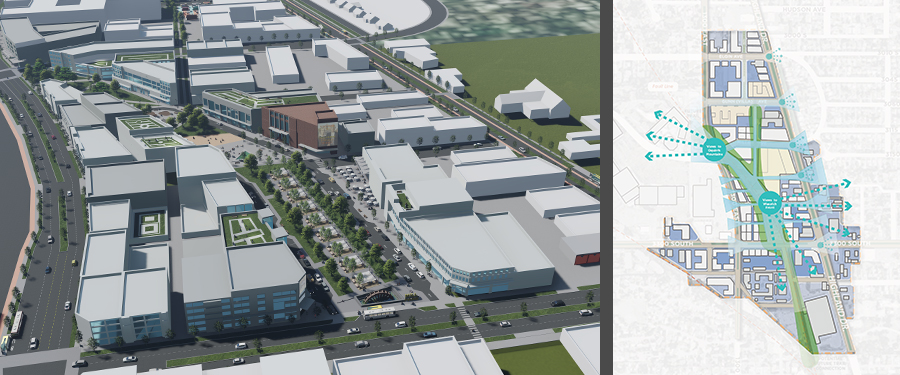
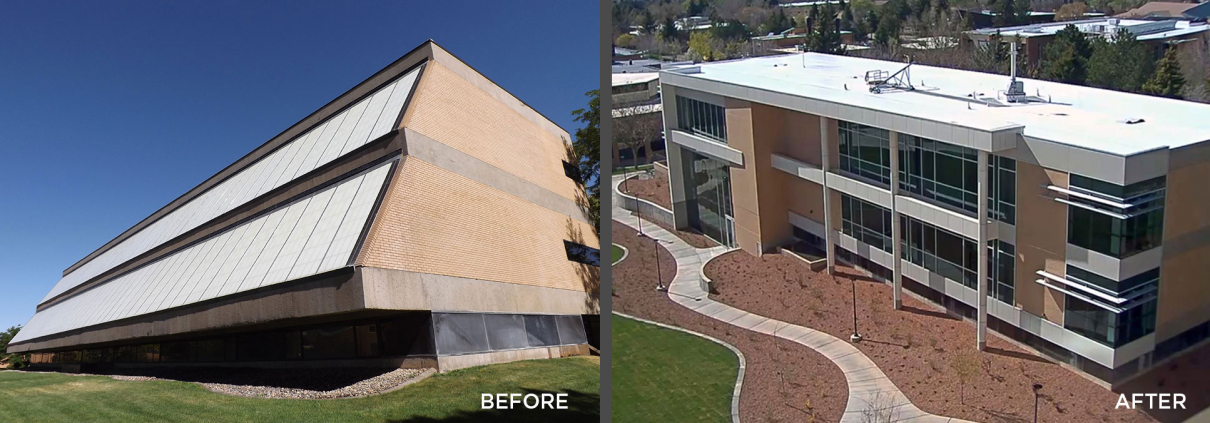
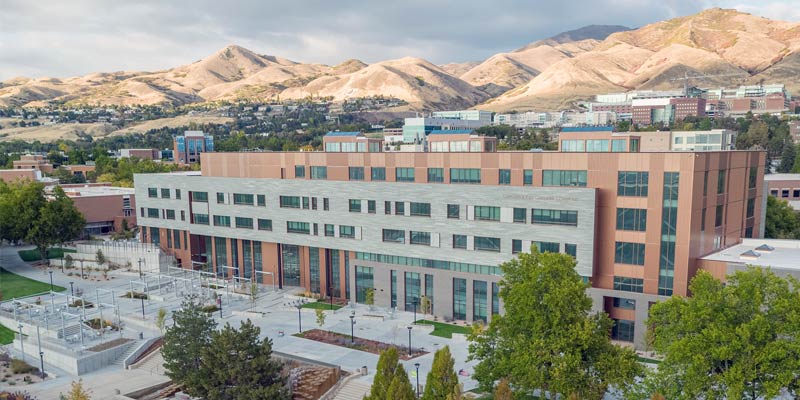 MHTN
MHTN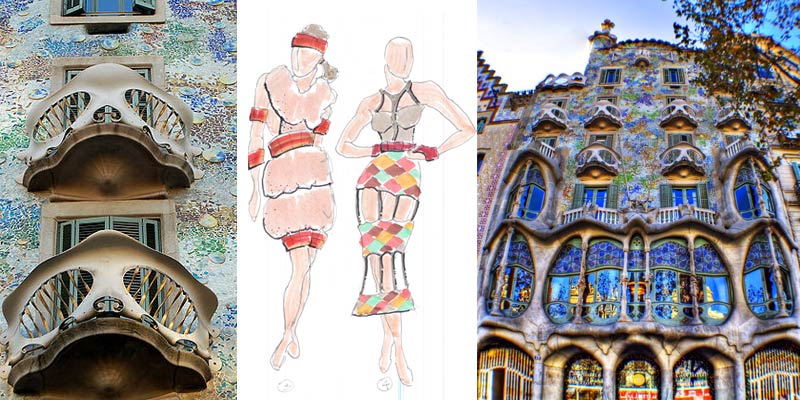
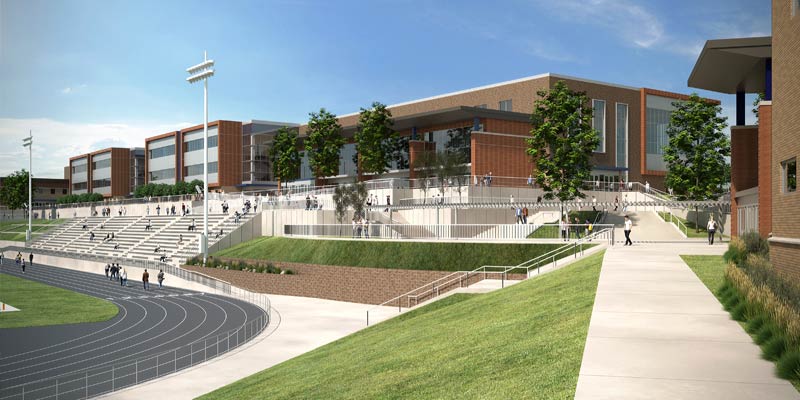 MHTN
MHTN
University of Utah Breaks Ground on Public-Private Partnership Housing Project
The University of Utah, in partnership with American Campus Communities (ACC), broke ground on its first public-private partnership (P3) housing development. This $155 million project marks a transformative first step in the university’s vision of “college town magic.” The goal is to create vibrant, student-centered residential environments that foster academic success and fulfill the ambition of building up to 5,000 additional beds on campus over the next five to ten years.
“[This Project] reflects the University’s commitment to growth and to innovation and to serving the students of the University of Utah” said The University’s Chief Operating Officer Jeff Labrum in his celebratory speech.
James E. Wilhelm III, Chief Development Officer at American Campus Communities (ACC) was also present at the event and shared insight on ACC’s involvement in the project “The American campus team, along with our Blackstone colleagues, are very excited that we are investing in the transformation, the fundamental change from a commuter institution to a residential university. We are excited to be a part of a growing, thriving part of the country with the same aspects being applied to the university.”
MHTN Architects, recognized nationally as a leader in student life and higher education design, has partnered with Ayer Saint Gross Architects to deliver a design that integrates natural inspiration with student-centered functionality. Together, the firms have crafted a space that supports diverse aspects of student life, promoting a sense of belonging, well-being, and engagement.
MHTN Architects has long been a trusted partner in shaping student-focused environments across the nation, with a portfolio that includes innovative projects for multiple universities. By collaborating with Ayer Saint Gross Architects, a firm renowned for its expertise in educational master planning, MHTN ensures that the University of Utah’s housing project aligns with both the university’s values and modern design excellence.
The six-story residence hall, located on a 2.9-acre site, will span approximately 350,000 square feet and accommodate 1,450 first- and second-year students. The project, expected to open in Fall 2026, emphasizes both community and individual needs with an array of thoughtful amenities:
Sustainability is at the core of this project’s design philosophy. The architecture integrates natural materials, energy-efficient technologies, and strategically placed daylighting to create a living environment that is both eco-friendly and comfortable for residents.
The residence hall’s architectural design emphasizes a façade inspired by the natural surroundings of Utah’s Wasatch Mountains. Named “Ascending Stone,” the exterior features a striking combination of vertically oriented metal panels in earthy tones, including browns, bronzes, and rust hues. This colorway is complemented by patinated green highlights that reflect the palette of local landmarks like Stewart Falls.
The materials and textures are thoughtfully designed to generate visual interest and harmonize with the landscape. Large windows maximize natural light while maintaining energy efficiency. These design choices underscore a commitment to sustainability and contextual sensitivity, blending built and natural environments to enrich the student experience.
MHTN’s involvement highlights a commitment to shaping spaces that foster learning and growth. Partnering with Ayer Saint Gross ensures the project embodies local identity while adhering to global best practices in student-centered design. This collaboration highlights MHTN’s leadership in creating environments that capture the essence of “college town magic.”